|

 Nancy Ellen Abrams is the co-author (with cosmologist Joel Primack) of
The View from the Center of the Universe: Discovering Our
Extraordinary Place in the Cosmos (Riverhead/Penguin 2006), and the
author of many articles that have appeared in journals such as The
Bulletin of the Atomic Scientists, Environment, California Lawyer, and
Science and Global Security. She has a B.A. in the history and
philosophy of science from the University of Chicago, a law degree
from the University of Michigan, and a diploma in international law
from the Escuela Libre de Derecho in Mexico City. Abrams is also a topical singer/songwriter who has
performed at conferences, concerts, and public events in nineteen
countries, released three albums, and been featured on National Public
Radio and on television. Nancy Ellen Abrams is the co-author (with cosmologist Joel Primack) of
The View from the Center of the Universe: Discovering Our
Extraordinary Place in the Cosmos (Riverhead/Penguin 2006), and the
author of many articles that have appeared in journals such as The
Bulletin of the Atomic Scientists, Environment, California Lawyer, and
Science and Global Security. She has a B.A. in the history and
philosophy of science from the University of Chicago, a law degree
from the University of Michigan, and a diploma in international law
from the Escuela Libre de Derecho in Mexico City. Abrams is also a topical singer/songwriter who has
performed at conferences, concerts, and public events in nineteen
countries, released three albums, and been featured on National Public
Radio and on television.
Abrams has a long-term
interest in the role of science in shaping a new politics and has
worked in this area for a European environmental think tank in Rome,
the Ford Foundation, and the Office of Technology Assessment of the
U.S. Congress, where she co-invented (with Prof. R. Stephen Berry of
the University of Chicago) a novel procedure called "Scientific
Mediation," which permits government agencies to make intelligent
policy decisions in areas where the underlying science is crucial yet
uncertain and controversial.
With Joel R. Primack she has co-authored
numerous articles on science policy, space policy, and the possible
cultural implications of modern cosmology. "Cosmology and Culture," the course she and Primack developed and
teach at the University of California, Santa Cruz, has received awards
from both the Templeton Foundation and the American Council of Learned
Societies. In their attempt to bring the modern
universe to the public, Abrams and Primack have spoken at over a
hundred venues around the world, from universities including Berkeley,
Columbia, Harvard, Princeton, Oxford and Cambridge, to the Senate
Chamber of France and the U.S. Treasury.
Back to top

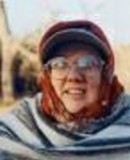 Dawn Hill Adrian, Ph.D. (Choctaw) is the founder, first president (1998-2007),
and Vision-Keeper of Tapestry Institute, a nonprofit research and education organization founded to reconnect people to the earth
by integrating different ways of knowing, learning about, and responding to the natural world. She has been awarded 5 National
Science Foundation grants for science education research and Indigenous science. She won a Templeton Science-Religion Course
Program award while at Baylor University, and held numerous positions in the Program after founding Tapestry, including
Southwest Regional Director and Award Judge. Adrian holds a doctorate in vertebrate paleontology from the University
of California, Berkeley, a Master's degree in Systematics and Ecology from the University of Kansas, and a Bachelor's
in Geology from the same institution. She has been on the faculties of Presbyterian College and Baylor University.
Adrian founded Tapestry in 1998. She now pursues writing full-time and is presently finishing a book about wildfire
in contextual perspective, based on Tapestry's experience with wildfire in 2006. The organization subsequently r
elocated to New Mexico, where she presently lives near Santa Fe. Her adult son, Harrison Adams (Qiu Lisen),
is an Asian scholar living and working in China. Dawn Hill Adrian, Ph.D. (Choctaw) is the founder, first president (1998-2007),
and Vision-Keeper of Tapestry Institute, a nonprofit research and education organization founded to reconnect people to the earth
by integrating different ways of knowing, learning about, and responding to the natural world. She has been awarded 5 National
Science Foundation grants for science education research and Indigenous science. She won a Templeton Science-Religion Course
Program award while at Baylor University, and held numerous positions in the Program after founding Tapestry, including
Southwest Regional Director and Award Judge. Adrian holds a doctorate in vertebrate paleontology from the University
of California, Berkeley, a Master's degree in Systematics and Ecology from the University of Kansas, and a Bachelor's
in Geology from the same institution. She has been on the faculties of Presbyterian College and Baylor University.
Adrian founded Tapestry in 1998. She now pursues writing full-time and is presently finishing a book about wildfire
in contextual perspective, based on Tapestry's experience with wildfire in 2006. The organization subsequently r
elocated to New Mexico, where she presently lives near Santa Fe. Her adult son, Harrison Adams (Qiu Lisen),
is an Asian scholar living and working in China.
Back to top

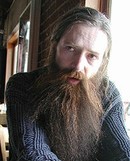 Aubrey David Nicholas Jasper de Grey (born April 20, 1963 in London, England)
is an English biomedical gerontologist. Aubrey David Nicholas Jasper de Grey (born April 20, 1963 in London, England)
is an English biomedical gerontologist.
De Grey is the author of the mitochondrial free-radical theory of aging, and the general-audience book "Ending Aging",
a detailed description of how regenerative medicine may be able to thwart the aging process altogether within a few decades.
He works on the development of what he has termed "Strategies for Engineered Negligible Senescence" (SENS) - a tissue-repair
strategy intended to rejuvenate the human body and thereby allow an indefinite lifespan. To this end, he has identified seven
types of molecular and cellular "damage" caused by essential metabolic processes; SENS is a proposed panel of therapies
to repair this damage.
De Grey has been interviewed in recent years in many news sources, including CBS 60 Minutes, BBC, The New York Times,
Fortune Magazine, The Washington Post, Popular Science and The Colbert Report. His main activities at present are as chairman
and chief science officer of the Methuselah Foundation and editor-in-chief of the academic journal Rejuvenation Research.
Back to top

 Thomas B. Fowler is founder and president of The Xavier Zubiri Foundation of North America,
devoted to disseminating the work of Xavier Zubiri in the English-speaking world. He serves as editor of two journals,
The Xavier Zubiri Review and The Telecommunications Review, and is author of over 100 articles, papers, and reviews.
He has translated two books of Zubiri’s writings, and has given courses and papers in the United States, Canada, Mexico,
South America, and Europe. Evolution, especially its systems and mathematical aspects, has been a subject of lifelong interest to him.
His book, The Evolution Controversy, A Survey of Competing Theories was published in 2007 by Baker Academic.
He serves as adjunct professor at George Mason University, teaching graduate courses in optics and optical communications.
He has a doctorate in systems and control theory from George Washington University, a Master of Science from Columbia University,
a Bachelor of Science in Electrical Engineering and a Bachelor of Arts in Philosophy from the University of Maryland, College Park.
He is also a Senior Principal Scientist at Noblis, Incorporated, a not-for-profit consulting firm working entirely in the
public interest specializing in objective analyses of issues, proposals, and problems in science and technology. Thomas B. Fowler is founder and president of The Xavier Zubiri Foundation of North America,
devoted to disseminating the work of Xavier Zubiri in the English-speaking world. He serves as editor of two journals,
The Xavier Zubiri Review and The Telecommunications Review, and is author of over 100 articles, papers, and reviews.
He has translated two books of Zubiri’s writings, and has given courses and papers in the United States, Canada, Mexico,
South America, and Europe. Evolution, especially its systems and mathematical aspects, has been a subject of lifelong interest to him.
His book, The Evolution Controversy, A Survey of Competing Theories was published in 2007 by Baker Academic.
He serves as adjunct professor at George Mason University, teaching graduate courses in optics and optical communications.
He has a doctorate in systems and control theory from George Washington University, a Master of Science from Columbia University,
a Bachelor of Science in Electrical Engineering and a Bachelor of Arts in Philosophy from the University of Maryland, College Park.
He is also a Senior Principal Scientist at Noblis, Incorporated, a not-for-profit consulting firm working entirely in the
public interest specializing in objective analyses of issues, proposals, and problems in science and technology.
Back to top

 Karl Giberson is an internationally known scholar of science and religion
and one of America’s leading participants in the creation/evolution controversy. He was the founding editor of Science &
Theology News, the leading publication in its field until it ceased publication in 2006, and editor-in-chief of Science & Spirit
magazine from 2003-2006. He has published over a hundred articles, reviews, and essays, both technical and popular, and written
four books: Worlds Apart: The Unholy War Between Science and Religion (1993), Species of Origins: America's Search for a Creation Story
(2002, with ENC historian Don Yerxa), Oracles of Science: Celebrity Scientists Versus God and Religion (
2007, with Spanish physicist/philosopher and priest, Mariano Artigas), and Saving Darwin: How to Be a Christian and Believe in Evolution
(2008). His 5th book, The Anointed: America’s Evangelical Experts (with ENC historian Randall Stephens) is currently under contract
with Harvard University Press. Karl Giberson is an internationally known scholar of science and religion
and one of America’s leading participants in the creation/evolution controversy. He was the founding editor of Science &
Theology News, the leading publication in its field until it ceased publication in 2006, and editor-in-chief of Science & Spirit
magazine from 2003-2006. He has published over a hundred articles, reviews, and essays, both technical and popular, and written
four books: Worlds Apart: The Unholy War Between Science and Religion (1993), Species of Origins: America's Search for a Creation Story
(2002, with ENC historian Don Yerxa), Oracles of Science: Celebrity Scientists Versus God and Religion (
2007, with Spanish physicist/philosopher and priest, Mariano Artigas), and Saving Darwin: How to Be a Christian and Believe in Evolution
(2008). His 5th book, The Anointed: America’s Evangelical Experts (with ENC historian Randall Stephens) is currently under contract
with Harvard University Press.
Back to top

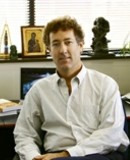 William Grassie is founder and emeritus executive director of the
Metanexus Institute on Religion and Science <www.metanexus.net>. Metanexus currently works with some 400 partners at
universities in 43 countries. Metanexus publishes an online journal, The Global Spiral, with hundreds of thousand monthly
page views and over 9000 subscribers. William Grassie is founder and emeritus executive director of the
Metanexus Institute on Religion and Science <www.metanexus.net>. Metanexus currently works with some 400 partners at
universities in 43 countries. Metanexus publishes an online journal, The Global Spiral, with hundreds of thousand monthly
page views and over 9000 subscribers.
Grassie received his doctorate in religion from Temple University in 1994 and his BA from Middlebury College in 1979.
Grassie has taught in a variety of positions at Temple University, Swarthmore College, and the University of Pennsylvania.
Prior to graduate school, Grassie worked for ten years in international relations and conflict resolution in Washington, D.C;
Jerusalem, Israel; Berlin, Germany; and Philadelphia, PA.
He is the recipient of a number of academic awards and grants from the American Friends Service Committee,
the Roothbert Fellowship, and the John Templeton Foundation. In 2007-2008, Grassie is serving as a Fulbright Fellow in the
Department of Buddhist Studies at the University of Peradeniya in Kandy, Sri Lanka.
Back to top

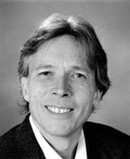 Chris Impey, recipient of eleven teaching awards at the University of Arizona,
is the youngest person ever to be awarded the position of University Distinguished Professor there. In 2002, he was named the
National Science Foundation Distinguished Teaching Scholar by the Carnegie Foundation, and in 2005 was selected a
Galileo Circle Scholar, the College of Science’s highest honor. Impey has had fourteen projects approved for observations
with the Hubble Space Telescope. He is co-author of Astronomy: The Cosmic Journey and The Universe Revealed.
He currently serves
as vice president of the American Astronomical Society. He lives in Tucson, Arizona. Chris Impey, recipient of eleven teaching awards at the University of Arizona,
is the youngest person ever to be awarded the position of University Distinguished Professor there. In 2002, he was named the
National Science Foundation Distinguished Teaching Scholar by the Carnegie Foundation, and in 2005 was selected a
Galileo Circle Scholar, the College of Science’s highest honor. Impey has had fourteen projects approved for observations
with the Hubble Space Telescope. He is co-author of Astronomy: The Cosmic Journey and The Universe Revealed.
He currently serves
as vice president of the American Astronomical Society. He lives in Tucson, Arizona.
Back to top

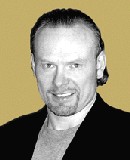 Max More is an internationally acclaimed strategic futurist who writes,
speaks, and organizes events about the fundamental challenges of emerging technologies. Max is concerned that our rapidly
developing technological capabilities are racing far ahead of our standard ways of thinking about future possibilities.
His work aims to improve our ability to anticipate, adapt to, and shape the future for the better. Max More is an internationally acclaimed strategic futurist who writes,
speaks, and organizes events about the fundamental challenges of emerging technologies. Max is concerned that our rapidly
developing technological capabilities are racing far ahead of our standard ways of thinking about future possibilities.
His work aims to improve our ability to anticipate, adapt to, and shape the future for the better.
Max has a degree in Philosophy, Politics, and Economics from St. Anne’s College, Oxford University (1984-87).
He was awarded a Dean’s Fellowship in Philosophy in 1987 by the University of Southern California. Max studied and taught philosophy
at USC with an emphasis on philosophy of mind, ethics, and personal identity, completing his Ph.D. in 1995, with a dissertation
that examined issues including the nature of death, and what it is about each individual that continues despite great change over time.
He is currently writing a book on the forces driving us into the future and how to apply cognitive and strategic tools to
improve our thinking about the resulting issues.
Back to top

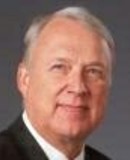 Ted Peters teaches systematic theology and bioethics at Pacific Lutheran Theological Seminary and
the Graduate Theological Union in Berkeley, CA, USA. He is co-editor of the journal, Theology and Science,
published at the Center for Theology and the Natural Sciences (CTNS). He is author of Playing God?
Genetic Determinism and Human Freedom (Routledge); Science, Theology, and Ethics (Ashgate);
Anticipating Omega (Vandenhoeck & Ruprecht/Eisenbrauns); The Evolution of Terrestrial and Extraterrestrial Life (Pandora);
and The Stem Cell Debate (Fortress).
He is co-author of Sacred Cells? Why Christians Should Support Stem Cell Research (Roman and Littlefield);
Theological and Scientific Commentary on Darwin’s Origin of Species (Abingdon); and Can You Believe in God and Evolution? (Abingdon).
He is co-editor of The Evolution of Evil (Vandenhoeck & Ruprecht/Eisenbrauns) and Bridging Science and Religion (Fortress).
He formerly directed the CTNS Science and Religion Course Program, funded by the Templeton Foundation.
He now serves on the Scientific and Medical Accountability Standards Working Group of the California Institute for
Regenerative Medicine and on the Genetics Task Force of the Evangelical Lutheran Church in America. Ted Peters teaches systematic theology and bioethics at Pacific Lutheran Theological Seminary and
the Graduate Theological Union in Berkeley, CA, USA. He is co-editor of the journal, Theology and Science,
published at the Center for Theology and the Natural Sciences (CTNS). He is author of Playing God?
Genetic Determinism and Human Freedom (Routledge); Science, Theology, and Ethics (Ashgate);
Anticipating Omega (Vandenhoeck & Ruprecht/Eisenbrauns); The Evolution of Terrestrial and Extraterrestrial Life (Pandora);
and The Stem Cell Debate (Fortress).
He is co-author of Sacred Cells? Why Christians Should Support Stem Cell Research (Roman and Littlefield);
Theological and Scientific Commentary on Darwin’s Origin of Species (Abingdon); and Can You Believe in God and Evolution? (Abingdon).
He is co-editor of The Evolution of Evil (Vandenhoeck & Ruprecht/Eisenbrauns) and Bridging Science and Religion (Fortress).
He formerly directed the CTNS Science and Religion Course Program, funded by the Templeton Foundation.
He now serves on the Scientific and Medical Accountability Standards Working Group of the California Institute for
Regenerative Medicine and on the Genetics Task Force of the Evangelical Lutheran Church in America.
Back to top

 Joel Primack's research has mainly been in relativistic quantum field
theory and in cosmology and particle astrophysics, a field that he has helped to create. In collaboration with UCSC astronomers
George Blumenthal and Sandra Faber and others, he developed the ``Cold Dark Matter'' (CDM) theory, which has helped to set the
agenda for theoretical and observational cosmology for two decades. More recently, he has been using the largest supercomputers
as well as analytic and semi-analytic techniques to investigate the implications of various hypotheses regarding the identity of
the dark matter for the formation and distribution of galaxies. He also works on science and technology policy and on the cultural
implications of the ongoing revolution in cosmology. He has developed computer games for teaching relativity and quantum mechanics,
and cosmological computer visualizations. Primack was director of the 1986 Theoretical Advanced Study Institute at UCSC, and co-director
of the 1995 Enrico Fermi school on Dark Matter at Varenna, Italy. He is P.I. of grants from NSF and NASA, and he and others at UCSC
raised funds from NSF in 1997 create the UCSC Scientific Visualization Laboratory and in 2001 to create the UCSC UpsAnd Beowulf Computer
Laboratory. Joel Primack's research has mainly been in relativistic quantum field
theory and in cosmology and particle astrophysics, a field that he has helped to create. In collaboration with UCSC astronomers
George Blumenthal and Sandra Faber and others, he developed the ``Cold Dark Matter'' (CDM) theory, which has helped to set the
agenda for theoretical and observational cosmology for two decades. More recently, he has been using the largest supercomputers
as well as analytic and semi-analytic techniques to investigate the implications of various hypotheses regarding the identity of
the dark matter for the formation and distribution of galaxies. He also works on science and technology policy and on the cultural
implications of the ongoing revolution in cosmology. He has developed computer games for teaching relativity and quantum mechanics,
and cosmological computer visualizations. Primack was director of the 1986 Theoretical Advanced Study Institute at UCSC, and co-director
of the 1995 Enrico Fermi school on Dark Matter at Varenna, Italy. He is P.I. of grants from NSF and NASA, and he and others at UCSC
raised funds from NSF in 1997 create the UCSC Scientific Visualization Laboratory and in 2001 to create the UCSC UpsAnd Beowulf Computer
Laboratory.
In the 1970s, Primack helped to create what is now called the Standard Model of particle physics; for example, in 1972,
with Ben Lee and Sam Trieman he did the first calculation of the mass of the charmed quark using renormalizable electroweak theory.
Primack's recent research has concentrated on the nature of the dark matter that comprises most of the mass in the universe.
He and Heinz Pagels were the first to suggest that the dark matter might be the lightest supersymmetric partner particle.
He also investigated the possibility that some of the dark matter might be light neutrinos (hot dark matter). He and his students
and other collaborators have analyzed many variants of CDM - especially CDM with less than a critical density of matter and a
compensating cosmological constant (CDM) - and confronted the predictions of these models with a wide range of observational data.
With his former graduate student Rachel Somerville (UCSC PhD 1997, now at Space Telescope Science Institute), Primack developed new
techniques for semianalytic modeling of galaxy formation. He and his former graduate student Ari Maller (PhD 1999, now a postdoc at
the University of Massachusetts) are investigating implications of gas clouds at high redshift. Primack, his students, and his former
graduate students James Bullock (PhD 1999, Hubble Fellow at Harvard 2002-04, now an assistant professor at the University of California,
Irvine) and Risa Wechsler (Hubble Fellow at the University of Chicago) have been investigating high-redshift galaxies using the
high-resolution simulations of Anatoly Klypin (New Mexico State University) and Andrey Kravtsov (University of Chicago).
Another project with Bullock and Somerville involves working out the absorption of high-energy gamma rays as a probe of galaxy formation.
Back to top

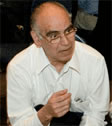 Varadaraja V. Raman received his Bachelor's and Master's degrees in Physics and Mathematics from the University of Calcutta before doing his doctoral work on the foundations of quantum mechanics at the University of Paris where he worked under Louis de Broglie. He has taught in a number of institutions, including the Saha Institute for Nuclear Physics in Calcutta, the Universite d'Alger in Algiers and the Rochester Institute of Technology, Rochester, NY, from where, after serving as professor of Physics and Humanities, he has retired as Emeritus Professor. He was associated with the UNESCO as an educational expert. Dr. Raman has also devoted several years to the study and elucidation of Hindu culture and religion. He is an associate editor in the eighteen volume Encyclopedia of Hinduism Project. Dr. Raman has authored scores of papers on the historical, social, and philosophical aspects of physics/science, as well as on India's heritage, and has authored eight books including Scientific Perspectives, Glimpses of Ancient Science and Scientists, Nuggets from the Gita, and Varieties of Science History. Dr. Raman serves on the board of the Metanexus Insitute and is a regular contributor to its online magazine. Varadaraja V. Raman received his Bachelor's and Master's degrees in Physics and Mathematics from the University of Calcutta before doing his doctoral work on the foundations of quantum mechanics at the University of Paris where he worked under Louis de Broglie. He has taught in a number of institutions, including the Saha Institute for Nuclear Physics in Calcutta, the Universite d'Alger in Algiers and the Rochester Institute of Technology, Rochester, NY, from where, after serving as professor of Physics and Humanities, he has retired as Emeritus Professor. He was associated with the UNESCO as an educational expert. Dr. Raman has also devoted several years to the study and elucidation of Hindu culture and religion. He is an associate editor in the eighteen volume Encyclopedia of Hinduism Project. Dr. Raman has authored scores of papers on the historical, social, and philosophical aspects of physics/science, as well as on India's heritage, and has authored eight books including Scientific Perspectives, Glimpses of Ancient Science and Scientists, Nuggets from the Gita, and Varieties of Science History. Dr. Raman serves on the board of the Metanexus Insitute and is a regular contributor to its online magazine.
Back to top

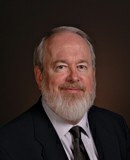 Barry Graham Ritchie is Professor of Physics in the Department of Physics at
Arizona State University, having just completed service as Interim Vice President and Dean of the New College of Interdisciplinary Arts
and Sciences at ASU. Prior to that appointment, he served as Chair of the Department of Physics and Astronomy within the College of
Liberal Arts and Sciences at ASU. He has been with ASU since 1984, being promoted to Professor of Physics in 1996. After receiving
a bachelor's degree in physics from Appalachian State University, he earned M.S. and Ph.D. degrees in nuclear physics from the
University of South Carolina, and served as a postdoctoral research associate at both the University of South Carolina and the
University of Maryland. A member of the American Physical Society with over 130 refereed publications, his research specialty is
in experimental nuclear and particle physics. Having served on technical advisory panels at Los Alamos National Laboratory and at
the Thomas Jefferson National Accelerator Facility (Jefferson Lab), his research group studies the structure of the protons and
neutrons that make up atomic nuclei through experiments at international particle accelerator facilities. His interests also include
the intersection of science and religion, and he and his colleagues at ASU have received funding from the Templeton Foundation to study
the issues raised by the enhancement of human capabilities through genetic and nano- technologies. Barry Graham Ritchie is Professor of Physics in the Department of Physics at
Arizona State University, having just completed service as Interim Vice President and Dean of the New College of Interdisciplinary Arts
and Sciences at ASU. Prior to that appointment, he served as Chair of the Department of Physics and Astronomy within the College of
Liberal Arts and Sciences at ASU. He has been with ASU since 1984, being promoted to Professor of Physics in 1996. After receiving
a bachelor's degree in physics from Appalachian State University, he earned M.S. and Ph.D. degrees in nuclear physics from the
University of South Carolina, and served as a postdoctoral research associate at both the University of South Carolina and the
University of Maryland. A member of the American Physical Society with over 130 refereed publications, his research specialty is
in experimental nuclear and particle physics. Having served on technical advisory panels at Los Alamos National Laboratory and at
the Thomas Jefferson National Accelerator Facility (Jefferson Lab), his research group studies the structure of the protons and
neutrons that make up atomic nuclei through experiments at international particle accelerator facilities. His interests also include
the intersection of science and religion, and he and his colleagues at ASU have received funding from the Templeton Foundation to study
the issues raised by the enhancement of human capabilities through genetic and nano- technologies.
Back to top

 Holmes Rolston is University Distinguished Professor of philosophy at
Colorado State University. He has written six books, acclaimed in critical notice in both professional journals and the national press.
The more recent are: Genes, Genesis and God (Cambridge University Press, 1999), Science and Religion: A Critical Survey
(Random House, McGraw Hill, Harcourt Brace), Philosophy Gone Wild (Prometheus Books), Environmental Ethics (Temple University Press),
and Conserving Natural Value (Columbia University Press). He has edited Biology, Ethics, and the Origins of Life
(Jones and Bartlett, Wadsworth). He has written chapters in eighty other books and over one hundred articles. Holmes Rolston is University Distinguished Professor of philosophy at
Colorado State University. He has written six books, acclaimed in critical notice in both professional journals and the national press.
The more recent are: Genes, Genesis and God (Cambridge University Press, 1999), Science and Religion: A Critical Survey
(Random House, McGraw Hill, Harcourt Brace), Philosophy Gone Wild (Prometheus Books), Environmental Ethics (Temple University Press),
and Conserving Natural Value (Columbia University Press). He has edited Biology, Ethics, and the Origins of Life
(Jones and Bartlett, Wadsworth). He has written chapters in eighty other books and over one hundred articles.
Rolston was awarded the Templeton Prize in Religion in 2003, awarded by H.R.H. Prince Philip in Buckingham Palace. He was awarded the Mendel Medal by Villanova University in 2005. Rolston has spoken as distinguished lecturer on all seven continents. He delivered the Gifford Lectures, University of Edinburgh, 1997/1998.
Rolston has served as a consultant with over two dozen conservation and policy groups, including the U. S. Congress and a Presidential Commission. He is past-president of the International Society for Environmental Ethics and has served on the Board of Governors of the Society for Conservation Biology. He serves on the Advisory Board, American Association for the Advancement of Science, Program of Dialogue on Science, Ethics, and Religion and is a member of the Working Group on Ethics of the World Conservation Union (IUCN).
Back to top

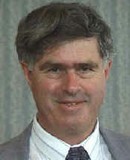 William Stoeger, S.J. is a Jesuit priest from the California
province of the Society of Jesus, and is also an astrophysicist working for the Vatican Observatory. He is based with the
Vatican Observatory research group at the University of Arizona in Tucson. William Stoeger, S.J. is a Jesuit priest from the California
province of the Society of Jesus, and is also an astrophysicist working for the Vatican Observatory. He is based with the
Vatican Observatory research group at the University of Arizona in Tucson.
He works on the cosmic microwave background radiation, and areas of cosmology dealing with constraining our models
of the universe with astronomical data, and he also works on black hole astrophysics, especially the astrophysics of
galaxies and quasars, and some quantum field theory.
At the same time he is also very interested in the relationship between religion and science, or more precisely,
the relationships between theology, science and philosophy. He is an adjunct associate professor of astronomy at the
University of Arizona.
Back to top

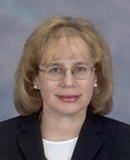 Hava Tirosh-Samuelson is a Professor of History at Arizona State
University in Tempe AZ. She writes on Jewish intellectual history with a focus on philosophy and mysticism in premodern
Judaism, the interaction between Judaism, Christianity, and Islam in the Middle Ages, feminist philosophy, Judaism and
ecology, bioethics, and religion and science. Through her interdisciplinary research, she seeks to create bridges between
intellectual disciplines, religious traditions, religious and secular outlooks, and gendered perspectives.
She is especially committed to understanding the complimentary relationship between science and religion from
an historical perspective. Hava Tirosh-Samuelson is a Professor of History at Arizona State
University in Tempe AZ. She writes on Jewish intellectual history with a focus on philosophy and mysticism in premodern
Judaism, the interaction between Judaism, Christianity, and Islam in the Middle Ages, feminist philosophy, Judaism and
ecology, bioethics, and religion and science. Through her interdisciplinary research, she seeks to create bridges between
intellectual disciplines, religious traditions, religious and secular outlooks, and gendered perspectives.
She is especially committed to understanding the complimentary relationship between science and religion from
an historical perspective.
Born in Kibbutz Afikim, Israel, Prof. Tirosh-Samuelson holds a B.A. in Religious Studies
from SUNY in Stony Brook (1974).and a Ph.D. in Jewish Philosophy and Kabbalah from the Hebrew University of Jerusalem (1978).
Prior to joining the faculty of Arizona State University, she taught at Indiana University (1991-1999),
Emory University in Atlanta (1988-1991), Columbia University (1982-1988), and Hebrew Union College-Institute
of Religion (1980-1982). In 1997 she was a Visiting Scholar at the University of Pennsylvania and in 2006 she
was a Visiting Fellow at Wolfson College of Oxford University and Visiting Scholar of the Oxford Centre for
Hebrew and Judaic Studies in Oxford. In 2005 Prof. Tirosh-Samuelson and her team at ASU received a large grant
($ 500,000) for the Templeton Research Lectures for Constructive Relations of Science and Religion (2006-2009)
for a project titled, "Facing the Challenges of Transhumanism: Religion, Science, and Technology."
The grant will sponsor public lectures, workshops, symposia, and book publications.
Back to top

 Natasha Vita-More is a Ph.D. candidate, University of Plymouth.
Her research concerns the transformative human and radical life extension. Her academic lectures on human futures
include Coeur des Sciences, Québec; Pecci Museum, Milan; University of Applied Design, Austria; Laboral Centro de
Industrial Creatión, Spain; Servico Social do Comercio, Brazil; Cumulus International Association of Universities and Colleges of Art,
Design and Media, Estonia Academy of Arts. Her writings have been published in Artifact, 2008 Volume 3,
Nanotechnology Perceptions, Vol. 2, Technoetic Arts, Vol. 5.3, Annual Workshop on Geoethical Nanotechnology,
Death And Anti-Death Vol. 2, Cryonics, Vol. 22.1, and Extropy, Vol. 17. Her bi-monthly column on transhumanism
is published in 'Nanotechnology Now'. Natasha Vita-More is a Ph.D. candidate, University of Plymouth.
Her research concerns the transformative human and radical life extension. Her academic lectures on human futures
include Coeur des Sciences, Québec; Pecci Museum, Milan; University of Applied Design, Austria; Laboral Centro de
Industrial Creatión, Spain; Servico Social do Comercio, Brazil; Cumulus International Association of Universities and Colleges of Art,
Design and Media, Estonia Academy of Arts. Her writings have been published in Artifact, 2008 Volume 3,
Nanotechnology Perceptions, Vol. 2, Technoetic Arts, Vol. 5.3, Annual Workshop on Geoethical Nanotechnology,
Death And Anti-Death Vol. 2, Cryonics, Vol. 22.1, and Extropy, Vol. 17. Her bi-monthly column on transhumanism
is published in 'Nanotechnology Now'.
Her theoretical and practice-based works are featured at "Evolution Haute Couture: Art and Science in the Post-Biological Age",
XXX Moscow International Film Festival and Moscow Museum, National Centre for Contemporary Design, Brooks Memorial Museum,
Women In Video, Telluride Film Festival, U.S. Film Festival.
Natasha is currently an advisor for non-profit organizations including Center for Responsible Nanotechnology,
Alcor Life Extension Foundation, Adaptive A.I., and Lifeboat Foundation, and a Fellow of the Institute for Ethics
and Emerging Technologies.
Back to top

|